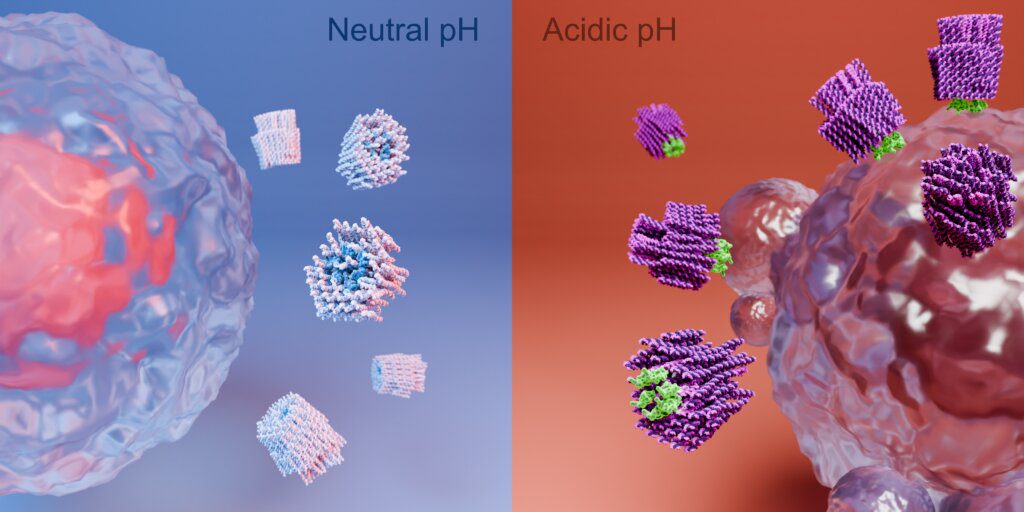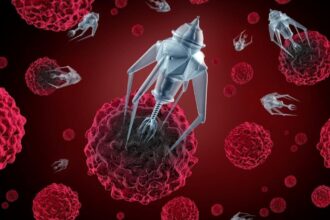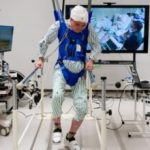A team of researchers at the Karolinska Institutet in Sweden has made a breakthrough in cancer treatment by developing tiny nanorobots that can kill cancer cells without damaging healthy ones.
These new nanorobots, made from amino acids and DNA, are designed to work like “smart missiles” by finding and destroying tumors with great precision. The study has been published in the journal Nature Nanotechnology.
The research team, led by Professor Björn Högberg from the Department of Medical Biochemistry and Biophysics, has been working on DNA origami technology for years. This technology allows scientists to fold DNA into special shapes to carry drugs or perform actions inside the body.
In this case, the DNA structure holds a special cancer-killing weapon that is only released when it reaches the acidic environment around a tumor. This means the nanorobots stay inactive in healthy parts of the body, reducing the risk of harmful side effects.
In simple words, the nanorobot is like a locked box carrying a weapon. The lock only opens in the tumor’s environment. This environment usually has a low pH level, which is more acidic than normal tissue. When the nanorobot senses this acidity, it opens and releases the weapon inside.
The weapon is made from six peptides (small chains of amino acids) arranged in a hexagonal pattern. This pattern is designed to trigger “death receptors” on the surface of cancer cells, which causes them to shrink and die.
Professor Högberg explains that if the peptide weapon was given directly as a drug, it could kill many healthy cells too. That’s why the team created a protective nanostructure to keep the weapon hidden until it reaches the tumor.


This smart solution allows the treatment to work only where it’s needed, making it much safer than traditional cancer treatments like chemotherapy, which often affect the whole body and cause serious side effects.
In lab experiments, the researchers tested how the nanorobot worked in different environments. At a normal pH of 7.4, the peptide weapon stayed hidden and did not harm the cells.
But when the pH dropped to 6.5, similar to what is found around cancer cells, the nanorobot became active and started killing the cancer cells. This showed that the weapon could be safely controlled depending on the location in the body.
The team then moved on to animal tests. They injected the nanorobots into mice that had breast cancer tumors. The results were impressive. The mice treated with the active nanorobots showed a 70 per cent reduction in tumor growth compared to the mice that received an inactive version. These early results give researchers hope that this new method could lead to better, safer treatments for cancer patients in the future.
Yang Wang, the first author of the study and a researcher at Karolinska Institutet said that the team will now study how the nanorobots perform in more complex cancer models that are closer to the real human disease. They also need to find out what side effects the nanorobot might cause before it can be tested on human patients.
The scientists plan to attach special proteins or peptides to the surface of the robot. Making nanorobots even more targeted. These additions could help the nanorobots find specific types of cancer cells more easily, increasing their accuracy even more.
This research has been supported by several respected organizations, including the Knut and Alice Wallenberg Foundation, the European Research Council (ERC), the Swedish Research Council, and the Academy of Finland. The invention is also being patented, which could help protect the technology as it moves toward clinical use.
The research is still in its early stages, experts are hopeful that this cancer-fighting nanotechnology could lead to a new generation of personalized, low-risk treatments.
“It’s an exciting time,” said Högberg. “We believe this could pave the way for a safer, smarter way to treat cancer.”











